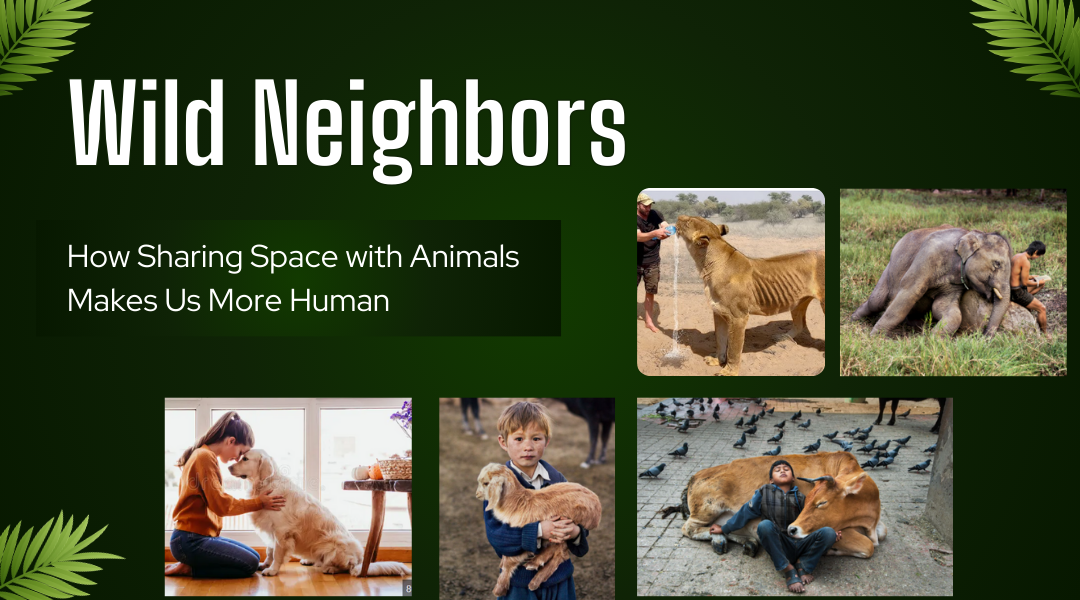The Therapy We Forgot Existed
There’s a reason hospitals don’t prescribe “go watch otters play” for depression—it would put Big Pharma out of business. Last summer, I spent three hours mesmerized by a red fox teaching her kits to hunt field mice. That afternoon did more for my anxiety than any meditation app ever could.
Nature’s Unwritten Rules
Wild animals don’t care about:
- Your LinkedIn title
- Your credit score
- That embarrassing thing you said in 2012
A bald eagle once stole a fisherman’s catch right off his line near my cabin. As the man cursed, the eagle gave him a look that said, “Should’ve held on tighter, buddy.” That’s the kind of humbling we all need.
Real Conservation Isn’t What You Think
Forget those glossy brochures with sad-eyed pandas. The most effective environmentalists I’ve met wear muddy boots and carry zip ties.
Case Study: The Chainsaw Midwives
In Oregon, a group of loggers-turned-conservationists now:
- Leave “wildlife corridors” of untouched trees between clear-cuts
- Install infrared cameras to track mountain lion cubs
- Soak chainsaw blades in vinegar to deter bears (apparently they hate the smell)
Their motto? “You can’t protect what you don’t understand.”
Urban Jungle Hacks
- Squirrel-proof your bird feeder by rubbing it with chili oil (birds can’t taste capsaicin)
- Discourage raccoons by leaving talk radio playing near trash cans (they hate NPR)
- Attract fireflies by planting native shrubs and turning off outdoor lights in June
When Animals Fight Back (And Win)
Nature has a way of reclaiming space when we screw up:
- The Alligator That Ate a Golf Course
- In Florida, a development drained a wetland for a luxury resort. Last year, a 12-foot gator took up residence in the 18th-hole water hazard. Golfers now play through at their own risk—and the reptile has better Yelp reviews than the clubhouse restaurant.
- Pigeons vs. Skyscrapers
- Architects keep designing glass towers. Pigeons keep crashing into them. The solution? A startup in Toronto sells transparent hawk silhouettes that reduce collisions by 75%. Sometimes the best tech is remembering birds exist.
Community Projects That Actually Work
Forget hashtag activism. These initiatives are changing real lives:
- The “Granny Brigade” (Japan)
- Retirees in Okinawa knit sweaters for stray cats using recycled kimono silk. The cats stay warm, traditional crafts survive, and tourists lose their minds taking photos.
- Prison Puppies (Colorado)
- Inmates train service dogs while serving time. One participant told me, “This pitbull taught me patience faster than 12 years of anger management classes.”
- Guerrilla Birdhouses (Berlin)
- An anonymous group installs miniature homes for owls in construction sites. Each comes with a plaque: “This apartment is rent-controlled. Respect the tenants.”
Why This Matters More Than Ever
We’re living through what scientists call the “Great Disconnect”—where kids can identify 100 corporate logos but can’t name five local birds. The fix isn’t complicated:
Try This Weekend:
- Sit still for 20 minutes in your yard/park. You’ll be shocked who shows up.
- Plant one native species (even in a window box). Monarch butterflies remember these things.
- Follow the “3-3-3 Rule”: Notice 3 animal sounds, 3 plant textures, 3 natural smells daily.
The Secret They Don’t Teach in School
Wild animals aren’t just “out there”—they’re our barometers. When foxes start denning in suburbs, when fireflies disappear from backyards, they’re not adapting. They’re sending memos.
A park ranger friend puts it best: “We don’t need to save nature. We need to remember we’re part of it.” Next time you see a raccoon going through your trash, tip your hat. That’s not a pest—that’s your wilder self checking in.
